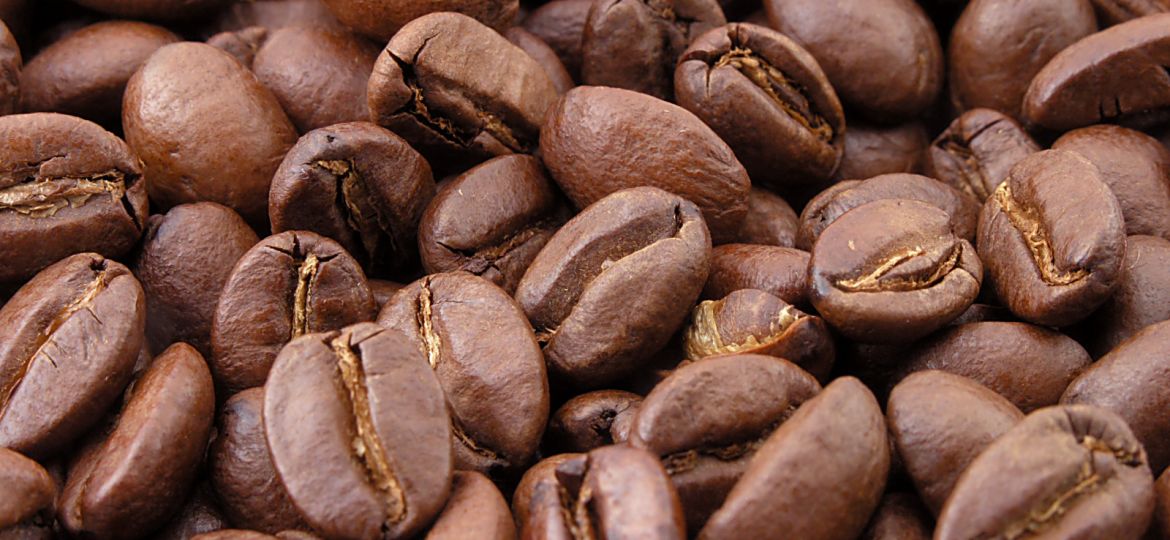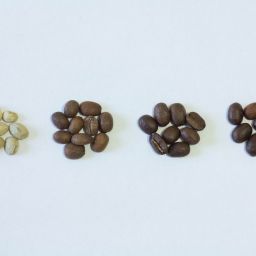
The world of coffee is rich and complex, with its roots deeply embedded in global culture and economy. Amidst this richness, there exists a common misconception that often perplexes both coffee aficionados and casual drinkers alike: the nature of coffee beans. Contrary to widespread belief, coffee beans are not beans in the botanical sense.
This article delves into the true identity of coffee beans, exploring their origin, development, and the journey they undergo from being a part of a plant to becoming the centerpiece of our beloved beverage.
What Are Coffee Beans?
Coffee beans are, in essence, the seeds of the Coffea plant. This revelation might come as a surprise to many who have long associated the term “bean” with legumes. The Coffea plant produces fruits known as coffee cherries, which house these seeds.
The coffee cherries themselves are red or purple when ripe, lending a vibrant hue to the plant.
The development of coffee beans within these cherries is a fascinating process. Each cherry typically contains two seeds, facing each other. These seeds undergo a transformation, starting as green and evolving in color as they mature.
The journey from seed to coffee bean is marked by careful cultivation, selective harvesting, and meticulous processing. The cherries are picked, and the seeds inside are then processed through either dry or wet methods, depending on the desired flavor profile and quality.
The Journey of Coffee Beans: From Plantation to Cup
The journey of coffee beans from plantation to cup is a testament to the meticulous care and conditions required for each bean to reach its full potential. Arabica and Robusta, the two primary types of coffee beans, thrive under different environmental conditions.
Arabica beans prefer higher elevations, between 600 to 2,200 meters, and temperatures ranging from 15 to 24°C (59 to 75°F), benefiting from the cooler, mountainous climates found in regions like Ethiopia, Colombia, and Guatemala.
In contrast, Robusta beans flourish at lower altitudes, under warmer conditions, between 24 to 30°C (75 to 86°F), and are more resilient to pests and diseases, making them suitable for the harsher climates of Vietnam and parts of Africa.
The harvesting of coffee cherries is a labor-intensive process, typically done by hand, either through selective picking, which ensures only the ripe cherries are harvested, or strip-picking, which removes all cherries from a branch at once.
Post-harvest, the beans are processed using one of two primary methods: the wet (or washed) process, which involves removing the cherry’s pulp before the beans are dried, and the dry process, where the entire cherry is left to dry before the beans are extracted.
Each method impacts the flavor profile of the coffee, with the wet process typically resulting in a cleaner, brighter flavor, and the dry process offering a fuller, sweeter taste.
Types of Coffee Beans
The diversity among coffee beans is vast, but three types stand out: Arabica, Robusta, and Liberica. Arabica beans are celebrated for their smooth, complex flavor profiles, often with hints of fruit and sugar, and possess a higher acidity compared to other beans.
They are the choice for specialty coffee producers and consumers who prefer a more refined taste. Robusta beans, known for their strong, robust flavor and a higher caffeine content, offer a bitter, earthy taste, making them popular in blends, especially for espresso due to the rich crema they produce.
Liberica beans, less common on the global market, provide a unique flavor profile with a somewhat fruity and floral aroma, distinguished by their irregular shape and larger size. Each bean type offers a distinct taste and experience, catering to the diverse palates of coffee drinkers worldwide.
Nutritional Profile of Coffee Beans
While coffee is often celebrated for its stimulating effects, the nutritional aspects of coffee beans are equally noteworthy. These beans are a source of several important nutrients, including fiber, protein, and iron.
The fiber in coffee beans can aid in digestive health, while the protein contributes to muscle repair and growth. Iron, a crucial component of hemoglobin in red blood cells, is essential for oxygen transport in the body.
Regular consumption of coffee can contribute to meeting these nutritional needs, albeit in small quantities. However, it’s the antioxidants found in coffee beans, particularly when dark roasted, that stand out for their health benefits.
These compounds can help reduce inflammation, protect against certain diseases, and overall contribute to a healthy diet.
This exploration into the world of coffee beans reveals not only the complexity involved in their production and processing but also the rich variety and nutritional benefits they offer.
From the plantation to the final cup, each step in the journey of a coffee bean is crucial in shaping the flavors and experiences we cherish in every sip.
Coffee Beans in Brewing and Flavor Profiles
The role of coffee beans in brewing cannot be overstated, as they are the cornerstone upon which the entire coffee experience is built. The flavor profile of a coffee bean is determined by its origin, variety, processing method, and roasting level, each contributing to the unique taste and aroma of the final brew.
Arabica beans, known for their sweet, complex flavors and higher acidity, are often preferred for lighter roasts, highlighting their inherent floral, fruity, or nutty notes.
Robusta beans, with their stronger, more bitter flavor and higher caffeine content, are typically used in espresso blends for a richer, more full-bodied experience.
The processing method—whether wet or dry—also significantly influences the flavor. Wet-processed beans tend to have a cleaner, more pronounced acidity, while dry-processed beans offer a sweeter, more full-flavored cup.
Moreover, the roast level can alter the bean’s flavor profile; light roasts preserve the bean’s original characteristics, medium roasts introduce a balanced flavor and acidity, and dark roasts develop deeper, more intense flavors often associated with chocolate or caramel.
The intricate interplay between these factors means that the choice of bean and its subsequent treatment can lead to a vast spectrum of flavors, from bright and acidic to smooth and rich, catering to the diverse preferences of coffee drinkers around the world.
Coffee Beans and Culture
Coffee transcends its role as a mere beverage to become a cultural icon, integral to various societies across the globe. Its cultural significance is as varied as its flavors, often embodying the identity and traditions of the communities that cherish it.
In Ethiopia, the birthplace of coffee, the coffee ceremony is a cornerstone of social life, a time-consuming ritual that fosters community and hospitality. Italian espresso bars, on the other hand, stand as hubs of daily interaction, where the quick consumption of coffee facilitates animated conversations and social bonding.
Beyond its social role, coffee has influenced economic practices, political relationships, and even art throughout history. The “coffeehouse culture” in Europe during the 17th and 18th centuries, for example, played a pivotal role in the Age of Enlightenment, serving as a venue for intellectual exchange and debate.
Today, the global coffee culture continues to evolve, with specialty coffee and third-wave coffee movements emphasizing sustainable farming, direct trade, and artisanal brewing techniques, further enriching the cultural tapestry of coffee.
In every cup of coffee, there lies a story of cultural heritage, craftsmanship, and communal experience, making it a beverage that is enjoyed not just for its taste but also for the rich cultural traditions it carries with it.
FAQs
Are coffee beans actually beans? No, coffee beans are not beans in the traditional sense. They are seeds from the fruit of the Coffea plant, often referred to as coffee cherries. The term “bean” is a misnomer, rooted in the seed’s resemblance to true beans.
Why are they called beans if they are seeds? The naming convention dates back to when the physical resemblance of coffee seeds to beans led early traders and explorers to refer to them as “beans.” This linguistic habit has persisted, even though it’s botanically inaccurate. The term “bean” stuck due to its ease of use and the visual similarity between the two.
Can you grow a coffee plant from a coffee bean? Yes, because coffee beans are seeds, it’s possible to grow a coffee plant from them. However, the seed must be fresh and not roasted, as roasting kills the seed, making it incapable of germination.
What are the main types of coffee beans used in my coffee? The main types of coffee beans used in coffee production are Arabica and Robusta, with Liberica being less common. Arabica beans are known for their sweet, complex flavors, while Robusta beans are more robust and higher in caffeine. Liberica beans offer a unique flavor profile that is fruity and somewhat floral.
Conclusion
This article has explored the fascinating world of coffee beans, clarifying a common misconception about their nature. Despite being seeds rather than true beans, coffee beans are integral to both the culinary and cultural fabric of societies worldwide.
From their ideal growth conditions and processing methods to their nutritional benefits and cultural significance, coffee beans enrich our lives in myriad ways. The journey from seed to cup is complex and steeped in history, reflecting the diverse flavors and traditions of coffee consumption across the globe.
As we savor our next cup of coffee, we can appreciate the rich story behind each bean, a testament to the beverage’s enduring appeal and its place in our daily rituals and communities.








